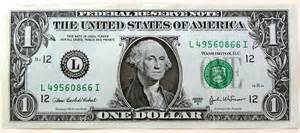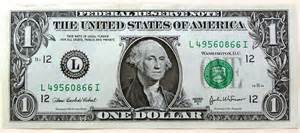
The US has announced that the number of Americans filing new claims for unemployment benefits fell last week to near a 15-year low. The news is reflective of the buoyance created by good jobs market in a stronger economy. Even when the labor market keeps getting stronger, a high dollar and lower oil prices are keeping inflation down. The modest economic growth early in the second quarter also indicates that the Federal Reserve will probably not raise interest rates until later in the year.
According to US government data, initial claims for state unemployment benefits slipped 1,000 to a seasonally adjusted 264,000 for the week ended May 9. The recent number is as near a 15-year low reached two weeks ago. The claims have been below 300,000 for 10 straight weeks, indicating a strengthening labor market. The claims may rise to 275,000 in later weeks according to industry estimates but that is still lower than the 300,000 threshold. Even so, the four-week moving average of claims, which is acclaimed to be a better indicator of the market, has fallen to the lowest level since April 2000.
The good news from the labor department has sent the US stocks higher. Prices for US government debt also rose and the dollar slipped against a basket of currencies.
Retail sales and manufacturing data indicate that the pace of growth of economy is still modest.
Meanwhile, the dollar has gained about 11 percent against the currencies of the main US trading partners since June last year.
Policy makers find it difficult to lift the interest rates as soft growth and subdued inflation pressures are complicating the revival plans. Another indicator is that the US central bank, which has a 2 percent inflation target, has kept its key short-term interest rate near zero since December 2008.
The producer price index for final demand also fell 0.4 percent last month as the cost of energy products and food declined. It was the third time this year that the PPI dropped and followed a 0.2 percent increase in March. The prices also were weighed down by declining profit margins at retailers as well as wholesalers. The producer prices fell 1.3 percent from last April which is the biggest year-on-year decline since 2010, after declining 0.8 percent in March.
A drop of 0.7 percent in the index for final demand goods accounted for more than 70 percent of the decline in the PPI last month. Energy prices fell 2.9 percent after rising 1.5 percent in March. Food prices fell for a fifth straight month.
Last month, the volatile trade services component, which mostly reflects profit margins at retailers and wholesalers, fell 0.8 percent after slipping 0.2 percent in the prior month. While the weakness in the PPI may not be reflected in next week's consumer inflation data, as the relationship between the two has weakened, economists note that a very mild form of inflation environment would persist for a while.
According to US government data, initial claims for state unemployment benefits slipped 1,000 to a seasonally adjusted 264,000 for the week ended May 9. The recent number is as near a 15-year low reached two weeks ago. The claims have been below 300,000 for 10 straight weeks, indicating a strengthening labor market. The claims may rise to 275,000 in later weeks according to industry estimates but that is still lower than the 300,000 threshold. Even so, the four-week moving average of claims, which is acclaimed to be a better indicator of the market, has fallen to the lowest level since April 2000.
The good news from the labor department has sent the US stocks higher. Prices for US government debt also rose and the dollar slipped against a basket of currencies.
Retail sales and manufacturing data indicate that the pace of growth of economy is still modest.
Meanwhile, the dollar has gained about 11 percent against the currencies of the main US trading partners since June last year.
Policy makers find it difficult to lift the interest rates as soft growth and subdued inflation pressures are complicating the revival plans. Another indicator is that the US central bank, which has a 2 percent inflation target, has kept its key short-term interest rate near zero since December 2008.
The producer price index for final demand also fell 0.4 percent last month as the cost of energy products and food declined. It was the third time this year that the PPI dropped and followed a 0.2 percent increase in March. The prices also were weighed down by declining profit margins at retailers as well as wholesalers. The producer prices fell 1.3 percent from last April which is the biggest year-on-year decline since 2010, after declining 0.8 percent in March.
A drop of 0.7 percent in the index for final demand goods accounted for more than 70 percent of the decline in the PPI last month. Energy prices fell 2.9 percent after rising 1.5 percent in March. Food prices fell for a fifth straight month.
Last month, the volatile trade services component, which mostly reflects profit margins at retailers and wholesalers, fell 0.8 percent after slipping 0.2 percent in the prior month. While the weakness in the PPI may not be reflected in next week's consumer inflation data, as the relationship between the two has weakened, economists note that a very mild form of inflation environment would persist for a while.





